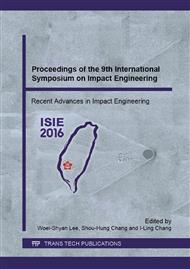p.116
p.122
p.128
p.133
p.139
p.147
p.153
p.159
p.167
Measurement of High Frequency Viscoelastic Properties of Deformed Rubber
Abstract:
Bearings of small turbo machines support high speed rotors rotating with the frequency over 1 [kHz]. Such bearings are often supported with O-rings made of soft materials like rubber to attenuate high frequency oscillations. Dynamic properties of rubber supporters have been measured experimentally for individual dimensions, but the universal prediction of dynamic properties for various frequencies is difficult not only because rubbers exhibit nonlinearity against its strain, but because O-ring supporters deform heterogeneously. For the precise prediction, it is necessary to investigate the viscoelasticity of rubber under various deformations and frequencies. Such properties can be measured by the standard shear vibration non-response method of ISO 6721-6 (JIS K 7244-6). However this is applicable only to low frequency range under 100 [Hz] because of the limitation of resonance frequency of the load cell. In this research, based on BERM (Base Excitation Resonant Mass) method, a new method was developed to measure the complex shear modulus at high frequencies up to 1 [kHz] of rubber sheets under homogeneous shear deformations. In the presented method, the force is calculated from the acceleration of the mass instead of the direct measurement by a load cell. Hence accurate measurement became possible even in the range beyond the resonance frequency of a load cell. The measured shear storage modulus G’ and shear loss modulus G” of deformed rubber were presented.
Info:
Periodical:
Pages:
139-146
Citation:
Online since:
September 2016
Authors:
Keywords:
Price:
Сopyright:
© 2016 Trans Tech Publications Ltd. All Rights Reserved
Share:
Citation:


